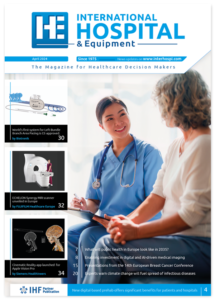Mobile application detecting atrial fibrillation reduces the risk of stroke
A new application developed at the University of Turku, Finland, can detect atrial fibrillation that causes strokes. Atrial fibrillation can be detected with the mobile phone application without any extra equipment. The mobile application can save lives all over the world as timely diagnosis of atrial fibrillation is crucial for effective stroke prevention.
The joint research project of the University of Turku and the Heart Centre of the Turku University Hospital studied three hundred patients with heart problems, half of whom had atrial fibrillation. The researchers managed to identify the patients with atrial fibrillation from the other group with a smart phone.
The mobile application that was developed at the Department of Future Technologies of the University of Turku detected which patients had atrial fibrillation even with a 96-percent accuracy. In other words, the application recognised automatically nearly all cases with atrial fibrillation and the number of false alarms was very low.
– The results are also significant in that the group included different kinds of patients, some of whom had heart failure, coronary disease, and ventricular extrasystole at the same time. The research was conducted as a blind study, which means that the hospital sent us measurement data for analysis without any additional information, says Project Manager Tero Koivisto from the Department of Future Technologies.
The completed analyses were sent back to the hospital where their reliability was checked. This way, additional optimisation during the study on the basis of the data was not possible.
– At first, I was rather anxious about how well the algorithm will do in the blind study, especially because I felt that the patient group was particularly challenging. You could say that I was surprised myself how well it worked in the end, says Mr Koivisto.
University of Torkuwww.utu.fi/en/news/news/Pages/Mobile-Application-Detecting-Atrial-Fibrillation-Reduces-the-Risk-of-Stroke.aspx

